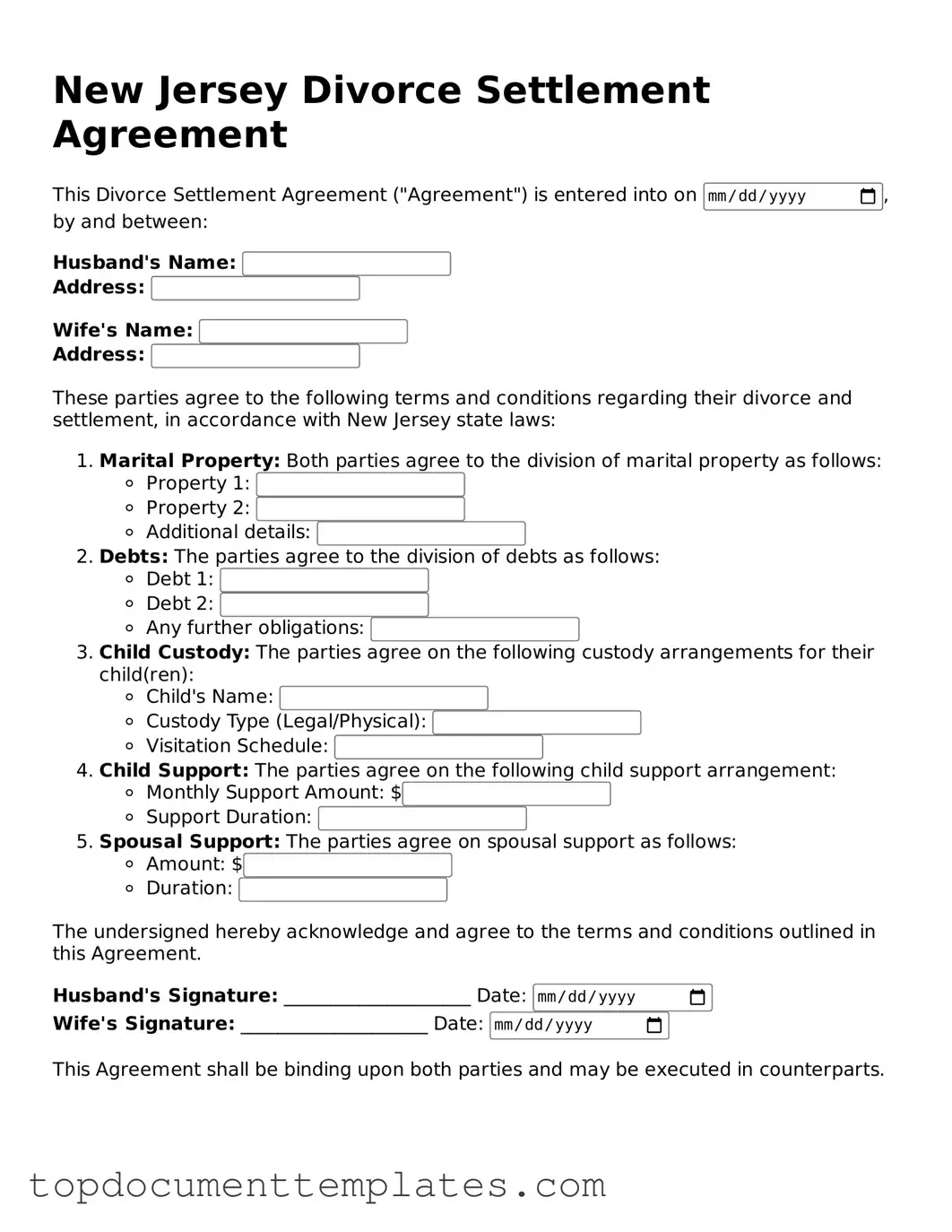Valid Divorce Settlement Agreement Form for New Jersey State
The New Jersey Divorce Settlement Agreement form is a legal document that outlines the terms agreed upon by both parties during a divorce. This agreement typically covers issues such as property division, alimony, child custody, and support. Completing this form is a crucial step in finalizing a divorce, ensuring that both parties are on the same page regarding their rights and responsibilities.
To begin the process, fill out the form by clicking the button below.
Open This Form
